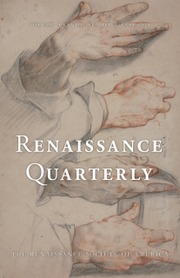Valentina Burgassi’s book is the narration of a story of migration and its positive and indelible consequences for Malta and its architecture in the modern era inextricably linked to the Order of Saint John of Jerusalem. It is a story of migration—especially from the Italian Peninsula, mostly male military engineers but also specialized workers—and of architectural treaties, ideas, and projects that allowed Renaissance art to assert itself in Malta and that led to the birth of the Mediterranean capital of Valletta from 1571 onwards. All this is addressed by the author with a rigorously scientific and interdisciplinary approach to the sources consulted, which in many cases have never before been published.
From the chapters 1 and 2 (“L’Ordine di San Giovanni” and “La committenza gerosolimitana tra la Santa Sede e il Convento”), Burgassi does not merely outline events relating to the history of architecture but succeeds in relating them to the historical, political, economic, and religious context of the Mediterranean at the time, reconstructing the peculiar characteristics of the Hospital’s symbolic places throughout its history: Acre, Cyprus, Rhodes, and, finally, Malta (first with Birgu and then Valletta). Burgassi also analyzes the Hospital’s relations with other political and military powers, primarily the papacy, the Spain of Charles V and Philip II, and Florence.
Particularly significant from its title is chapter 3, “Geometria e potere nella città dell’Ordine”: geometry and power had an equal weight in the birth of the new capital, Valletta. Geometry had to visually translate the military, religious, and political rigor that inspired it; in other words, the order and proportions of urban and architectural forms were a legitimization of power in the eyes of other Mediterranean powers.
The most important architectural treatises of the Renaissance, with Leon Battista Alberti’s at the forefront, are the focus of chapter 4, “Dai trattati all’architettura”—in particular, the transition from theory to practice. Francesco Laparelli and Gerolamo Cassar become familiar names to the reader, along with the architects and military engineers involved, as well as local craftsmen, materials, and traditions, making the new capital a unicum in the heart of the Mediterranean. The construction of the Verdala Palace takes on specific significance in this context as an emblem of the power of its patron, Grand Master Hugues Loubenx de Verdalle (1582–95), and by extension of the entire Hospital in accordance with the conception of public architecture that was taking shape.
The beating heart of the book is chapter 5, “Il Rinascimento a Malta,” where the characteristics of the Order’s architecture in Valletta are better delineated and, above all, the link between Maltese Renaissance architecture and that of Italy and Europe is unequivocally revealed. Burgassi takes the reader by the hand and accompanies them through the most significant building sites, including the Grand Master’s palace and the Albergia d’Italia, to which she devotes ample space. Burgassi convincingly puts forward the thesis that we cannot speak of a univocal architectural style but rather one that is constantly open to heterogeneous external influences, firstly because of the Order’s own constituent DNA, and secondly because of the persistence of local tradition. The Italian influence, Tuscan and Sicilian above all, between the mid-sixteenth and early seventeenth century was predominant.
Among the buildings constructed, the author delineates the history of the Sacra Infermeria, one of the most representative and emblematic examples of the use of stereotomy as a key construction technique in Malta’s architecture. The sober and rigorous Renaissance language imposed itself first in public buildings, while in private construction the language remained more composite. As in the case of artistic commissions, the figure of Grand Master Pietro del Monte (1568–72) was very important in the history of architecture: with him there was a decisive acceleration towards the realization of a modern capital worthy of hosting the highest aristocracy of the time.
A rich and valuable documentary appendix and a fine iconographic support complete the volume.



